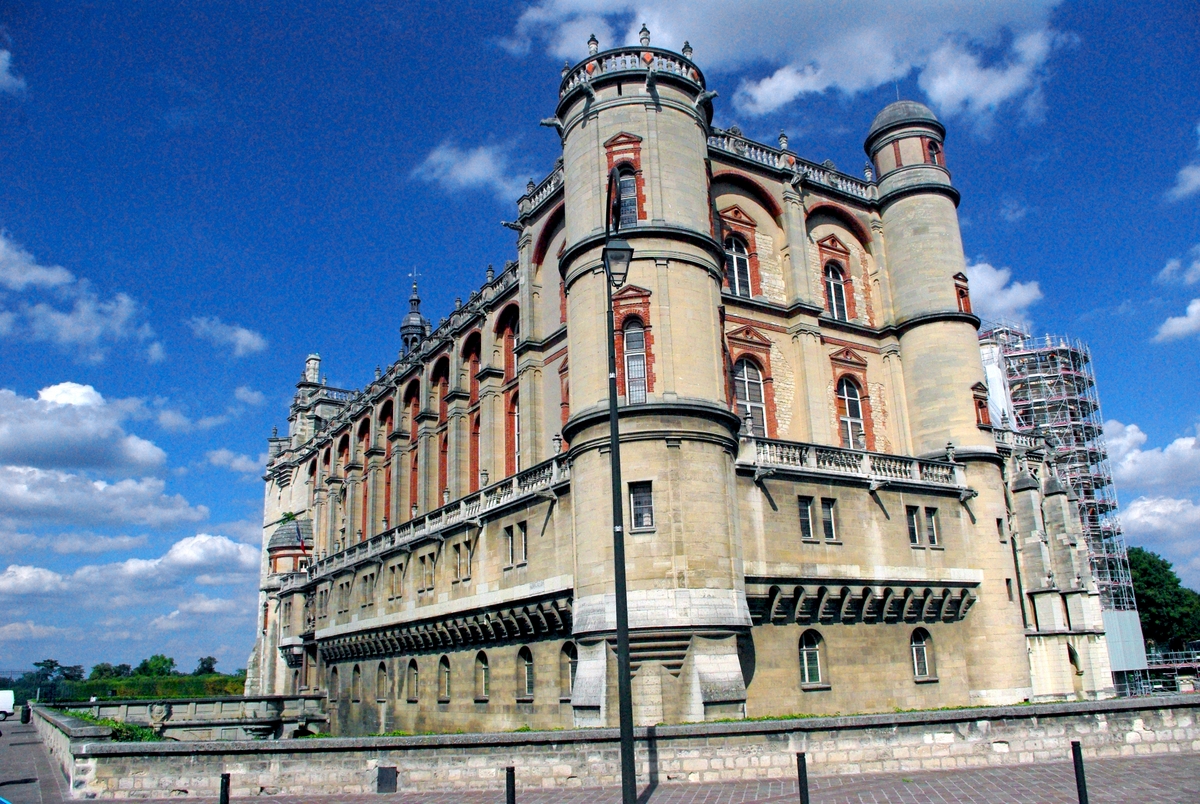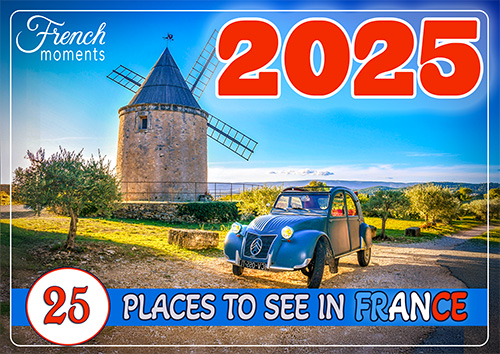The Pavillon Henri IV stands today as one of the last witnesses to the once-grand Château-Neuf of Saint-Germain-en-Laye, a royal residence that crowned the Seine valley with its splendour.
Imagine the scene: from here, monarchs could gaze all the way to Montmartre, commanding views as far as the eye could reach.
Built in the shadow of the Château-Vieux, the Château-Neuf flourished from the mid-16th century until 1680.
Though much of it has vanished, a few fragments remain to tell its tale—one of those is the birthplace of no other than Louis XIV.
And it’s precisely this story that we’re about to uncover together in this article.
Château-Neuf of Saint-Germain-en-Laye
Right next to the Château-Vieux, the Château-Neuf rose to life in 1557, a striking vision crafted by Philibert Delorme under the reign of Henri II.
It was designed to house the King’s Court and was meant to impress from its beginning.
Picture this: a low and sprawling central structure anchored by four pavilions, each crowned with a second level and those classic Mansard roofs.

At its heart, Delorme created an unusual quatrefoil-shaped courtyard—a touch of architectural daring that must have dazzled the Court.
But it was Henri IV who truly brought the Château-Neuf to its peak, expanding it with three elegant gardens and a series of seven terraces cascading down toward the Seine, linked by elaborate staircases.
By 1603, it had become a grand stage for the King’s Court.
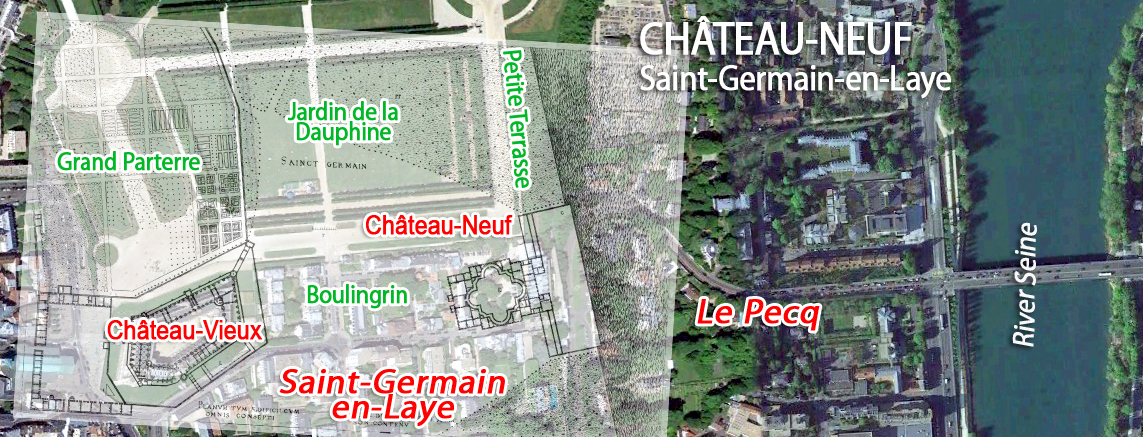
Catherine de’ Medici’s haunted place
Catherine de’ Medici, it is said, avoided visiting Saint-Germain later in life, haunted by a chilling prediction.
Her astrologer, Ruggieri, foretold that Saint-Germain would be the place of her death.

Superstitious by nature, Catherine took heed and rarely set foot anywhere bearing that name.
Instead, she established herself at the Hôtel de la Reine near Saint-Eustache in Paris, avoiding the Tuileries—despite overseeing its construction—because it fell under the parish of Saint-Germain-l’Auxerrois.
This tale recounted through the ages, remains in the realm of legend, but it lingers as a reminder of her mysterious fears.
Birth and Death of the Kings of France
Then, in 1638, history took centre stage: Louis XIV, the future Sun King, was born here on 5 September.
His father, Louis XIII, would take his last breath within these same walls just five years later.
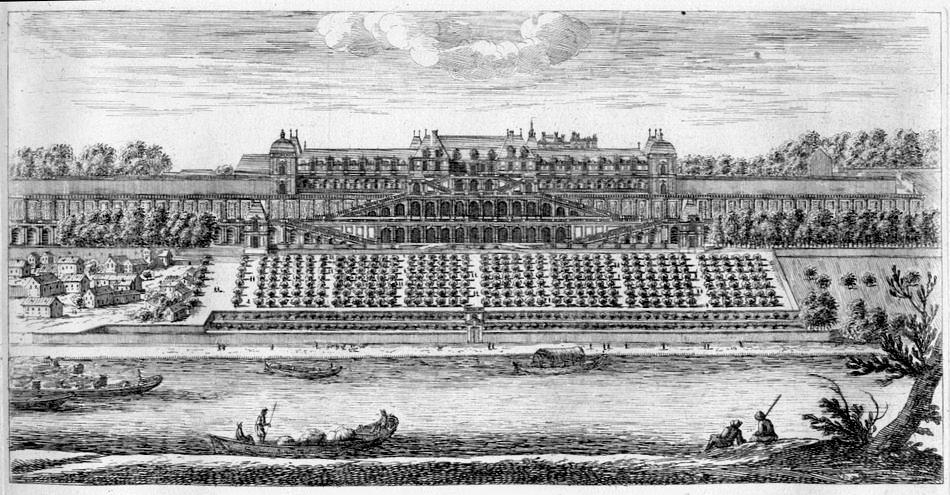
A Royal Sanctuary: The Exiled Stuarts at Château-Neuf
From 1650 to 1654, the Château-Neuf served as a refuge for Charles II Stuart after the tragic execution of his father.
Years later, on 7 January 1688, Louis XIV welcomed another exiled Stuart king, James II, to Saint-Germain.
James II, accompanied by his court, took up residence at the Château-Neuf and later moved between both castles, remaining there until he died in 1701.
It was here in 1692 that his youngest child, Princess Louise Marie Thérèse Stuart, was born—and where she would later pass away in 1712.
Ever gallant, Louis XIV, and later his nephew, the Regent, ensured that the castle remained a sanctuary for James’s widow, Mary of Modena.
She quietly spent her final years at the Château-Neuf until she died in 1718.

The Fall of Château-Neuf: From Royal Gift to Revolutionary Ruin
On 19 January 1777, King Louis XVI handed the dilapidated Château-Neuf to his younger brother, the Count of Artois, along with a 600,000 livre grant for much-needed repairs.
Plans for its demolition and reconstruction were drawn up by architects François-Joseph Bélanger and Jean-François-Thérèse Chalgrin.
But then came the Revolution.
The château was seized as a national asset and sold to former steward Louis-Charles Guy (1742–1823), who dismantled it, divided the land, and sold off the materials piece by piece.
So ended the Château-Neuf, not with a royal restoration but a Revolutionary undoing.
The Remains of the Castle
Today, there are only a few remains of the castle still visible:
- the red brick wing of the Pavillon Henri IV
- the Gardener’s Pavilion (Pavillon du Jardinier) in Le Pecq
- two ramps of a terrace at the end of rue Thiers
- a few remains hidden in the cellars of houses built in the area.
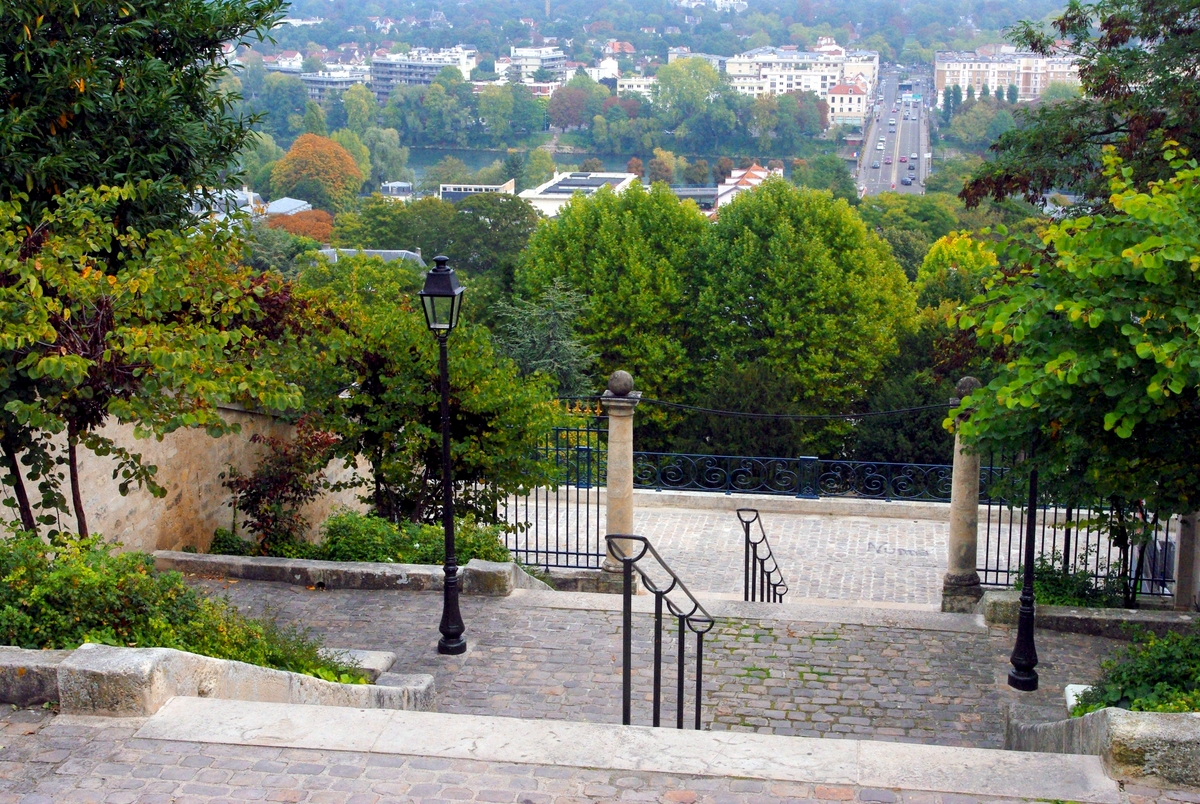
To get a better idea of what Château Neuf looked like, here is a video showing a reconstitution of the historic site:
Find out more about the Château-Vieux of Saint-Germain-en-Laye.
About the Historic Pavillon Henri IV
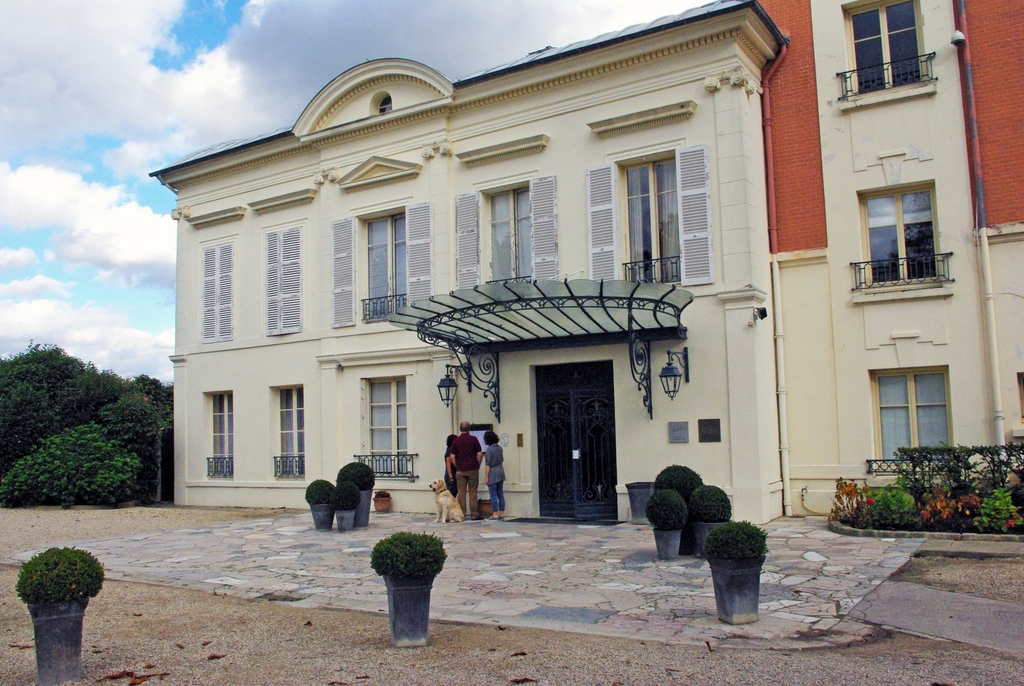
The Pavillon Henri IV houses a luxury hotel and a gastronomic restaurant which has become over the years a historic place as well as an institution to the town of Saint-Germain-en-Laye.
One of its rooms includes the oratory where baby Louis XIV was anointed.
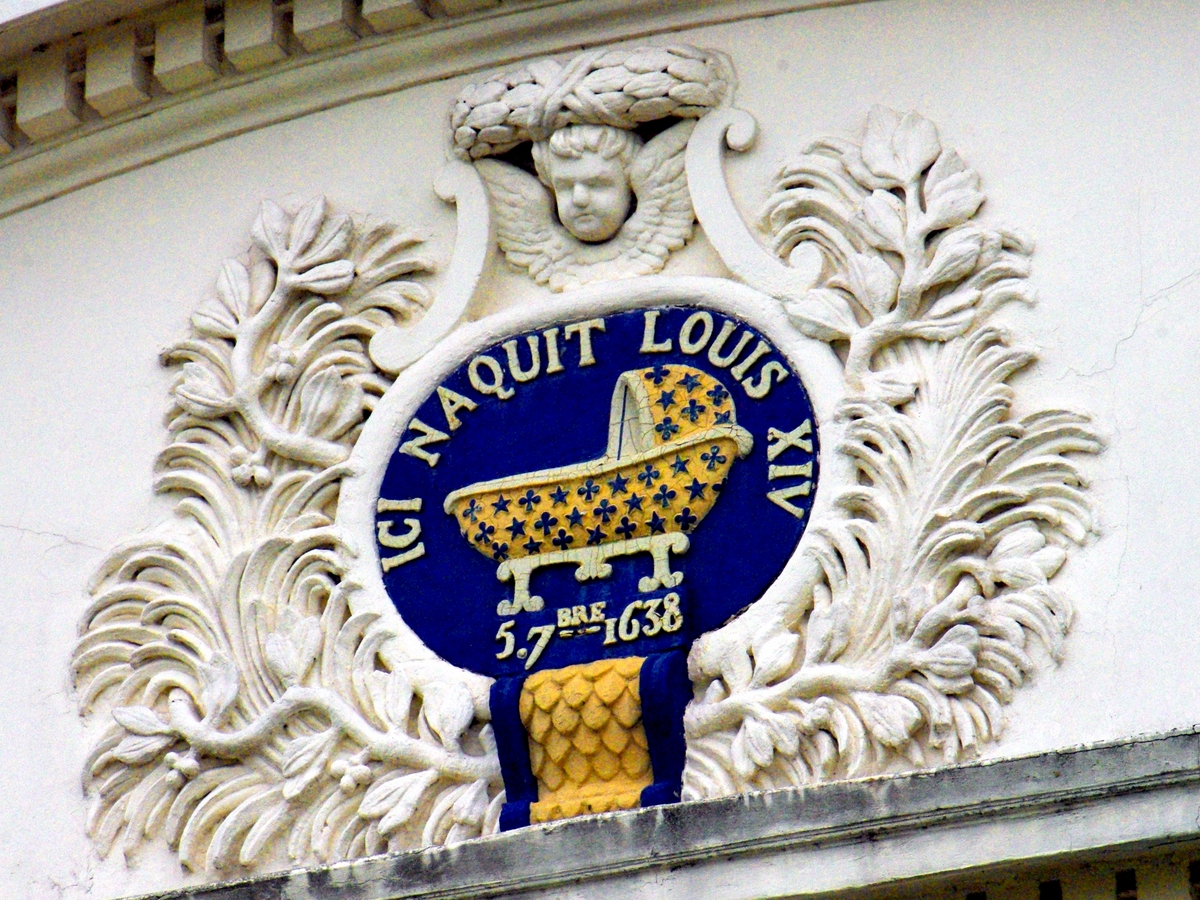
The Details surrounding the Birth of Louis XIV at the Pavillon Henri IV
On the night of 4 September 1638, Queen Anne of Austria felt the first pangs of labour.
Her pains intensified by early morning on the 5th, and King Louis XIII was summoned.
He quickly joined her at Saint-Germain-en-Laye, along with close family and select court members.
Only a handful of trusted individuals gathered in the Queen’s chamber while bishops held mass and prayed for a safe delivery outside.
At around eleven in the morning, the moment finally came—Queen Anne gave birth to a son, the long-awaited heir, later to become Louis XIV.
Instantly, the Bishop of Meaux performed a hasty baptism in the room, with the court watching in reverent silence.
The King then led the entire court to the chapel of Châteaux-Vieux, where a grand Te Deum was sung to celebrate the royal birth.
Later, on 26 September, the Queen performed a public thanksgiving ceremony, presenting her son at the altar as a dedication to God.
In an extraordinary display, she carried the infant Dauphin herself, without assistance, through a solemn ritual led by the Bishop of Lisieux.
Those present were struck by the child’s calm as he fixed his gaze on the bishop, silent and attentive, as if aware of the sacred moment.
In an almost prophetic gesture, the infant gripped the bishop’s hand with surprising strength, which many saw as a sign of his future strength and unity with the Church.
With this remarkable birth, hopes soared.
The people looked to their new “rising sun” as the one who would bring light to the kingdom one day.
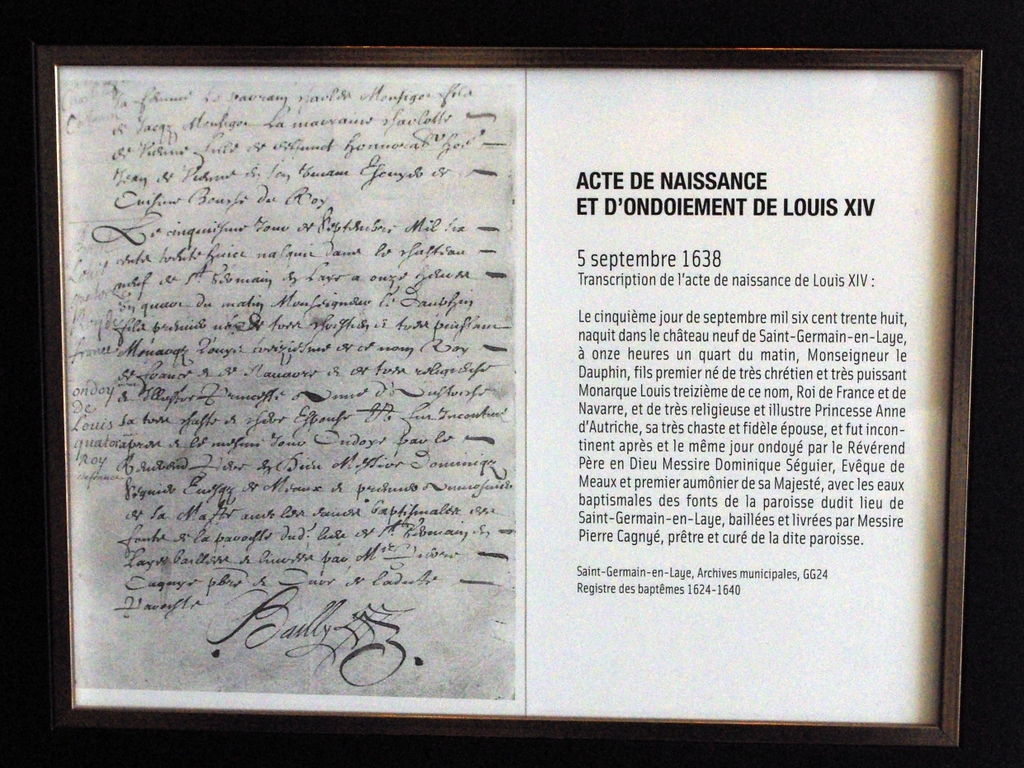
Pavillon Henri IV in the 19th century
In 1825, a bold entrepreneur named Barthélémy Planté purchased the building.
He restored and expanded it, eventually selling it to the Compagnie des chemins de fer de l’Ouest (Western Railway Company).
Soon after, the building found a new life.
It was first rented to Jean-Louis-François Collinet, a talented chef who transformed it into a renowned restaurant.
By 1865, it passed to Barbotte Père et Fils, and under Collinet’s creative touch, the restaurant quickly earned a name for itself.
Pommes Soufflées and Sauce Béarnaise
It was here that Collinet famously invented pommes soufflées and sauce béarnaise.
The story of pommes soufflées is one of pure chance.
On 24 August 1837—the very first day of train service between Saint-Lazare station and Le Pecq, right beside the bridge on the Seine’s right bank—Queen Marie-Amélie was due to dine at the restaurant.
The train was delayed, leaving Collinet scrambling to keep his fries hot.
With no other option, he tossed them back into the oil.
The result? Crispy, golden pommes soufflées, born from a culinary twist of fate.
The Pavilion’s Famous Guests
Founded in 1850 by a Welshman, this distinguished institution has hosted a dazzling array of guests—from aristocrats to celebrated artists, writers, and statesmen.
Among them were French statesman Adolphe Thiers, who spent his final days here, as well as presidents Mac Mahon, Carnot, and Félix Faure.
Royalty graced its rooms, too, including Georges V and Alphonse XII, and it welcomed cultural icons like Victor Hugo, Georges Sand, Emile Zola, Alphonse Daudet, Jean-François Millet, Liszt, Pasteur, and Sarah Bernhardt.
And perhaps its most renowned guest, Alexandre Dumas, famously penned The Three Musketeers and The Count of Monte Cristo within these walls.
Composer Jacques Offenbach even created some of his legendary operettas here!

During the Second World War
Saint-Germain-en-Laye was under occupation during the Second World War from 14 June 1940 to 26 August 1944.
The German army’s high command for the occupied zone, Oberbefehlshaber West, was headquartered at the Pavillon Henri IV—until a Royal Air Force bomb struck it on 3 March 1942.
Following the attack, the command was relocated to another place in Saint-Germain, the Villa David.
A Royal Moroccan Visit
From 1 to 16 November 1955, on his journey back from exile in Madagascar, the Moroccan monarch Mohammed V and his family and entourage took over the entire hotel.
To mark this historic visit, a commemorative plaque was unveiled on 24 July 1982 as part of the twinning between Saint-Germain-en-Laye and Témara.
Stay where Louis XIV was born!
And since it’s now a hotel, why not imagine yourself stepping into history by booking a night in the place where Louis XIV was born?
>> Book your room in the Pavillon Henri IV*** <<
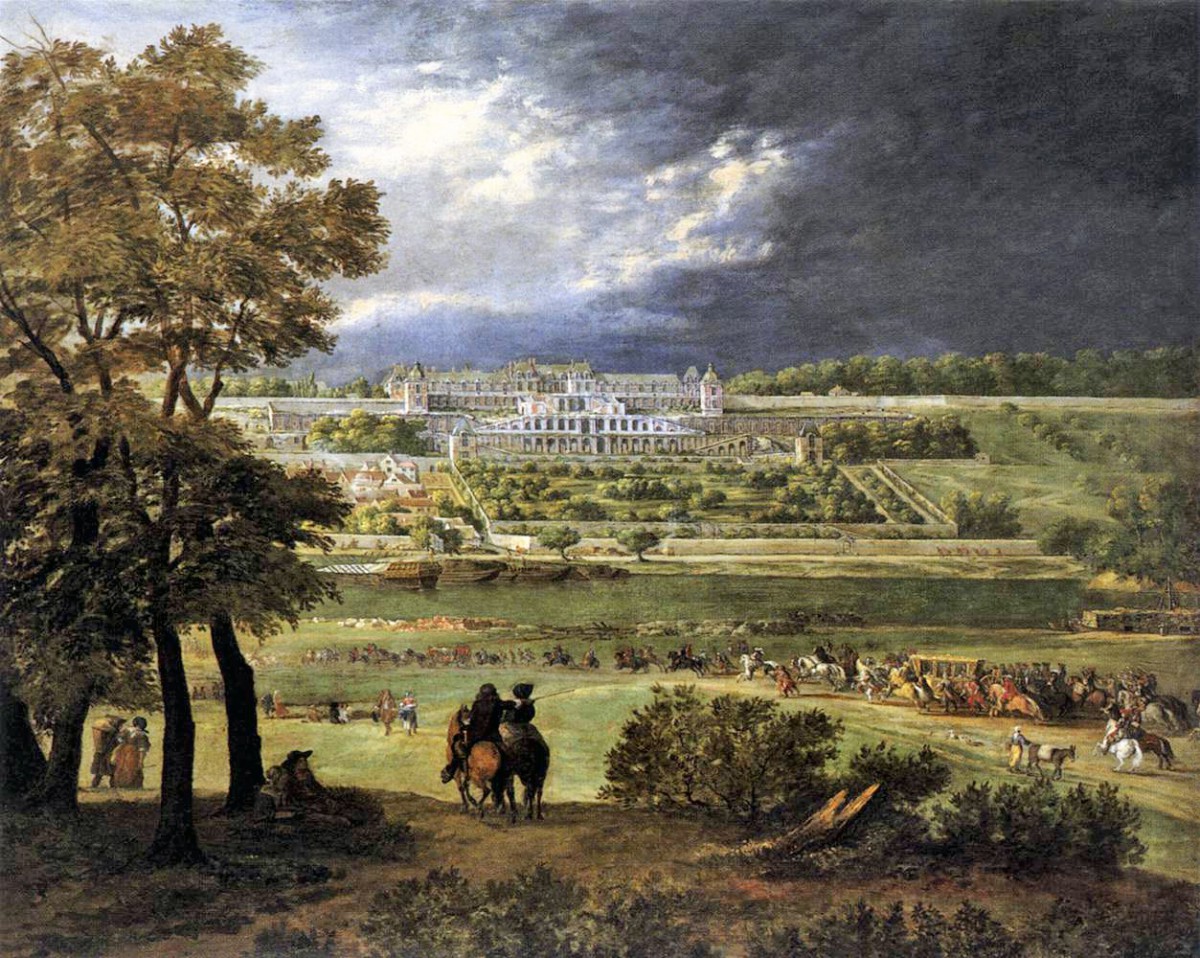
Useful Links about Saint-Germain-en-Laye
